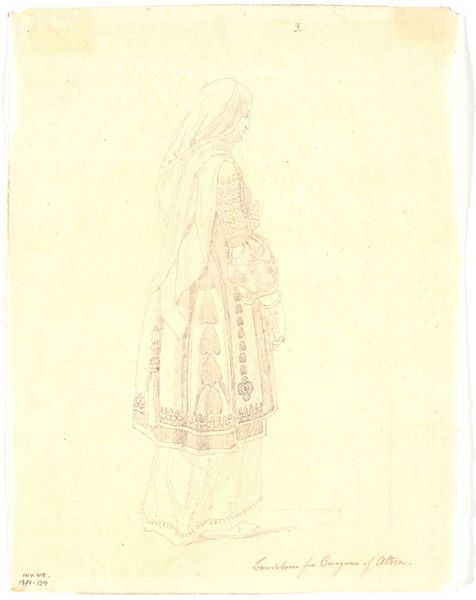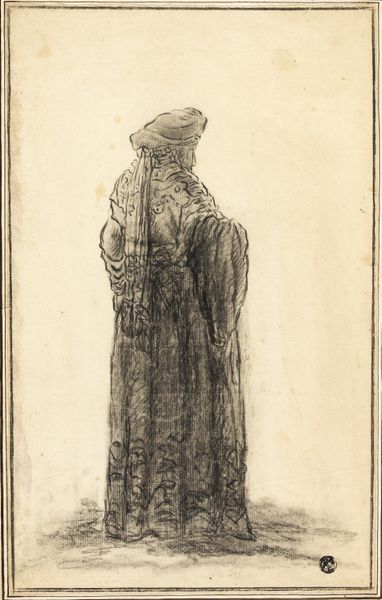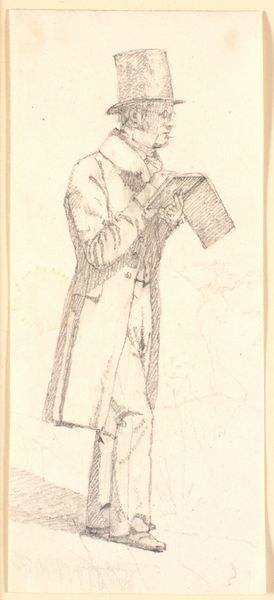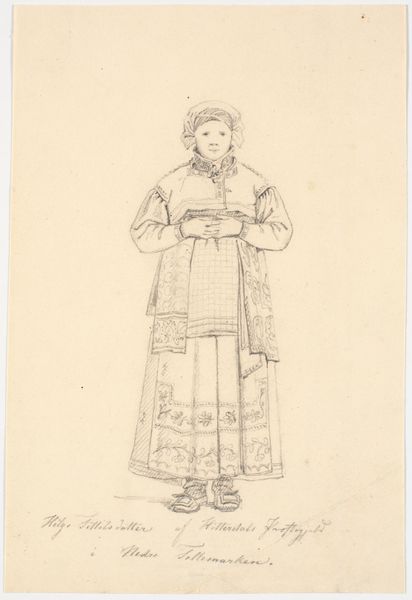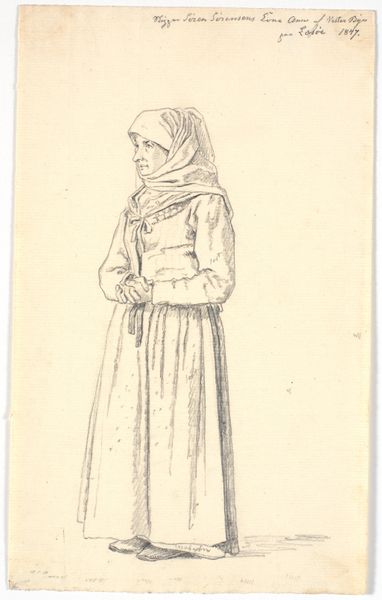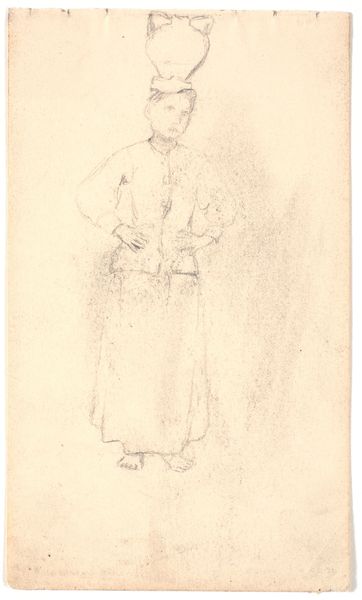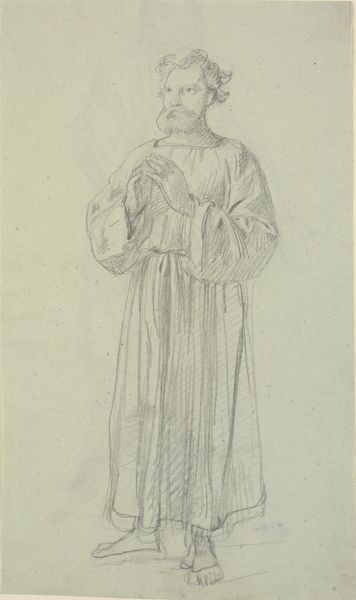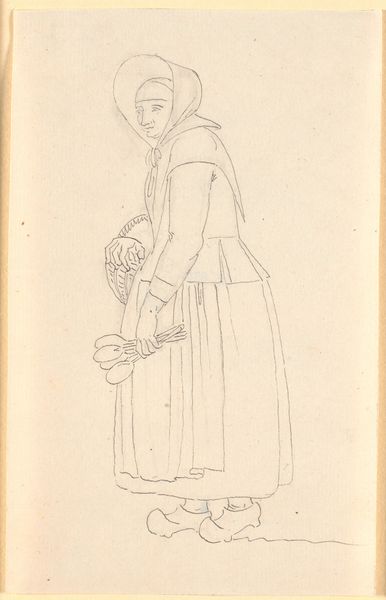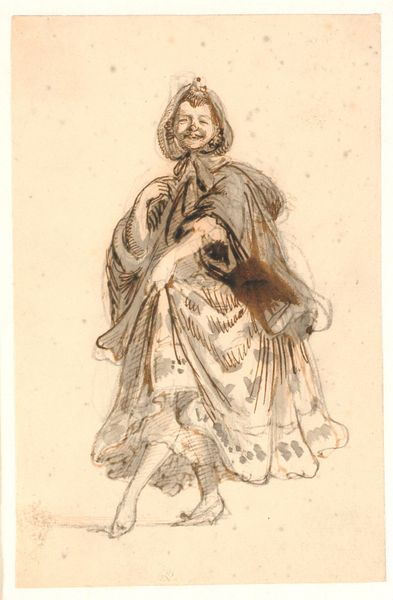
drawing, pencil
#
portrait
#
drawing
#
figuration
#
romanticism
#
pencil
#
academic-art
Dimensions: 204 mm (height) x 161 mm (width) (bladmaal)
Curator: Looking at this pencil drawing from 1835, we see Martinus Rørbye’s “Bondekone fra Omegnen af Athen i Festdragt,” currently held at the SMK. The title translates to "Peasant Woman from the Outskirts of Athens in Festive Dress." Editor: My initial impression is one of subdued dignity. Despite the detail in the festive dress, there’s a melancholy stillness to her posture and the muted tones of the pencil. Curator: The fact that Rørbye chose to depict a "peasant woman," and in such detail, speaks volumes about his focus. This wasn't about portraying royalty or idealized beauty; it's about capturing the labor and cultural significance embedded in everyday garments. Notice the meticulous rendering of the layers of fabric, likely locally produced textiles. Editor: Absolutely. And it's through these layers that a story unfolds. The headscarf, the patterned skirt - each element carries symbolic weight, a cultural marker defining her identity within that Athenian community. The bowed head, almost a sense of pious reserve. Curator: It begs the question, though, who was this made for? Was this ethnographic study, perhaps catering to a European audience eager to consume images of "exotic" cultures? Or was there something more at stake? Editor: That is interesting. It may be an act of cultural preservation, maybe reflecting an idealized, romanticized view of a disappearing way of life. There’s a visual code at play, inviting viewers to decode her story. It seems that this rendering becomes very different than an immediate "documentary" function, almost becoming elevated. Curator: That elevation speaks to the tension within Romanticism. On one hand, a desire to return to 'authentic' rural life; on the other, the knowledge that these ways of life were inevitably shaped by encroaching modernity. We only need to analyze Rørbye's artistic treatment, for us to determine its role as part of the supply chain. The materiality of the clothes, and that they exist and have meaning far beyond their production. Editor: True, perhaps the clothing even served as amulets. Curator: Thank you, you've made me notice its details! Editor: I can see a cultural narrative through clothing here that I previously missed.
Comments
No comments
Be the first to comment and join the conversation on the ultimate creative platform.

